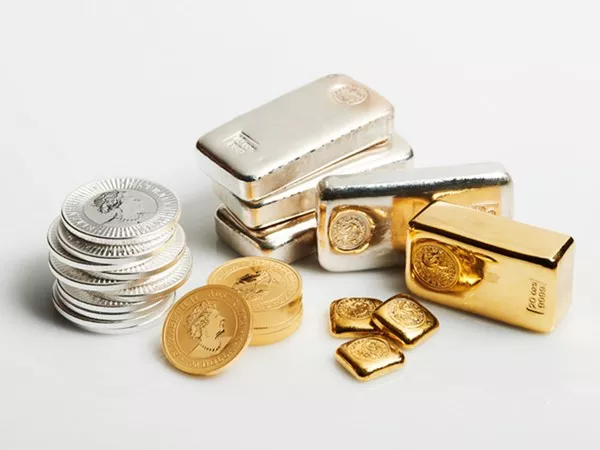In today’s ever-changing economic landscape, the allure of gold as a precious metal and an investment option remains steadfast. Investors and enthusiasts alike are often left wondering, “How much does 1kg gold cost?” This question is not only relevant but crucial for those looking to understand the dynamics of the gold market and make informed decisions. In this article, we’ll delve into the intricate world of gold pricing, exploring various factors that influence its cost and shedding light on the current trends in the global gold market.
Understanding the Basics: Gold Price Dynamics
To comprehend the cost of 1kg gold, one must first grasp the fundamental dynamics that govern gold pricing. Gold, being a globally traded commodity, is subject to constant fluctuations influenced by supply and demand, geopolitical events, and economic indicators. The price is commonly quoted per troy ounce, and converting this to the cost of 1kg gold requires an understanding of the prevailing market conditions.
a. Global Supply and Demand Trends
The delicate balance between the supply and demand for gold plays a pivotal role in determining its price. Fluctuations in mining production, changes in consumer demand, and the overall economic health of major gold-producing countries contribute to the ebb and flow of gold prices.
b. Geopolitical Events and Gold Prices
Geopolitical tensions have a significant impact on the price of gold. Investors often turn to gold as a safe-haven asset during times of uncertainty, causing a surge in demand and subsequently influencing the cost of 1kg gold. Recent historical events, such as geopolitical conflicts and economic crises, have underscored gold’s status as a reliable store of value.
Current Gold Market Trends: A Closer Look
To gauge the present cost of 1kg gold, it is essential to examine the prevailing market trends. As of [current date], the gold market has witnessed [percentage]% increase/decrease compared to the previous [time frame]. This fluctuation can be attributed to several factors, including interest rates, inflation rates, and the performance of major currencies.
a. Interest Rates and Gold Prices
The relationship between interest rates and gold prices is intricate. Generally, when interest rates rise, the opportunity cost of holding gold increases as investors may prefer interest-bearing assets. Conversely, lower interest rates often lead to an increase in gold prices, making it a more attractive investment.
b. Inflation Hedge: Gold’s Resilience
Gold has long been considered a hedge against inflation. As inflation erodes the purchasing power of fiat currencies, investors seek refuge in gold to preserve wealth. The current inflation rate, standing at [percentage], has contributed to the upward pressure on gold prices.
Global Economic Impact on Gold Prices
The interconnectedness of the global economy has a profound effect on the cost of 1kg gold. Economic indicators, such as GDP growth, unemployment rates, and trade balances, serve as barometers for gold prices.
a. GDP Growth and Gold Demand
As economies grow, so does the demand for gold. Rapid economic expansion often results in increased consumer spending, driving demand for gold jewelry and other products. This surge in demand can exert upward pressure on gold prices.
b. Unemployment Rates and Investor Sentiment
High unemployment rates can create economic uncertainty, prompting investors to turn to gold as a safe haven. The resultant increase in demand can impact the cost of 1kg gold, reflecting the prevailing sentiment in the market.
Investing in Gold: Strategies for Success
With a clearer understanding of the factors influencing the cost of 1kg gold, investors can formulate effective strategies for navigating the gold market. Diversification, timing, and risk management are key components of a successful gold investment strategy.
a. Diversification: Balancing Risk and Reward
Incorporating gold into a diversified investment portfolio helps spread risk. While gold can act as a hedge during economic downturns, its inclusion should be aligned with an investor’s risk tolerance and overall investment goals.
b. Timing the Market: An Art and a Science
Successfully timing the gold market requires a combination of market analysis and a deep understanding of economic indicators. Investors should stay informed about global events and trends to make informed decisions about buying or selling gold.
Gold as a Commodity: Beyond Investment
While the cost of 1kg gold is of paramount importance to investors, it is essential to recognize gold’s significance beyond its role as a financial asset. Gold has intrinsic value in various industries, including electronics, medicine, and aerospace.
a. Industrial Applications: Driving Demand
The unique properties of gold, such as its conductivity and corrosion resistance, make it indispensable in the manufacturing of electronic components. The demand for gold in these industries contributes to its overall market value.
b. Gold in Medicine: A Precious Resource
Gold’s biocompatibility and lack of toxicity have led to its use in medical applications, including the treatment of rheumatoid arthritis and certain cancers. The medical sector’s reliance on gold adds another dimension to its overall demand and value.
In conclusion, determining how much 1kg gold costs involves a comprehensive analysis of various factors, including global supply and demand, geopolitical events, market trends, and economic indicators. As investors navigate the complex world of gold pricing, staying informed and adapting strategies to changing market conditions will be instrumental in making sound investment decisions. Whether viewed as a financial asset, a safe haven, or a valuable commodity in various industries, gold’s multifaceted nature continues to captivate and influence the global economy.


